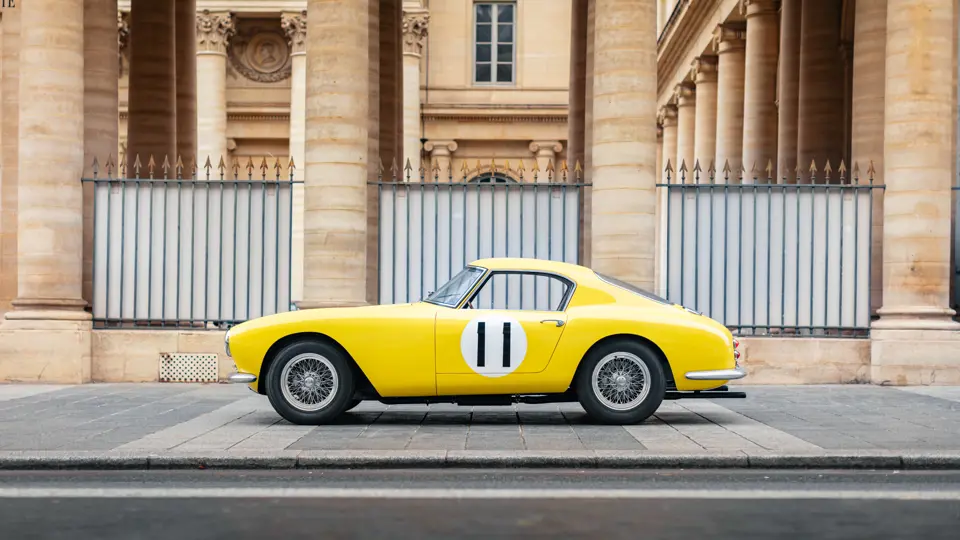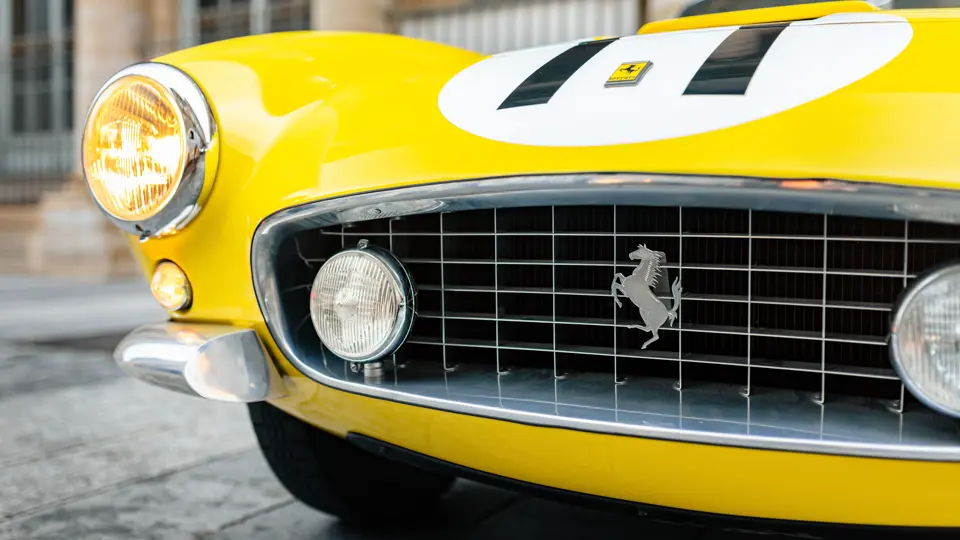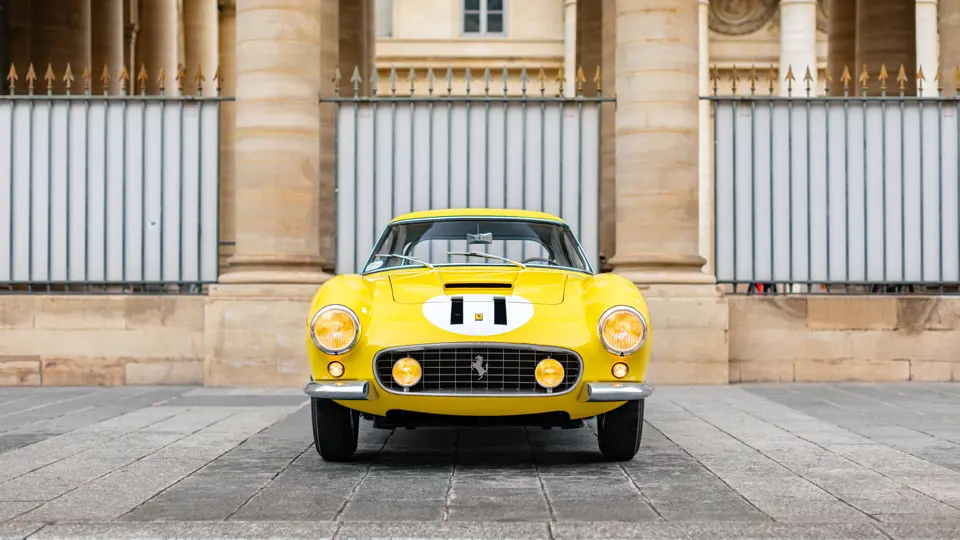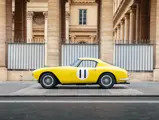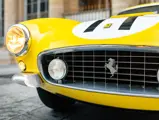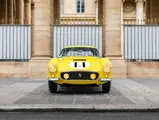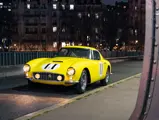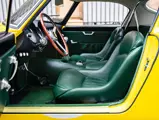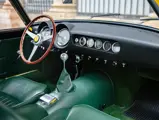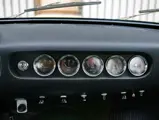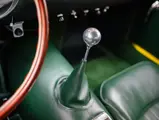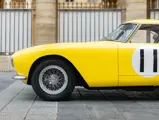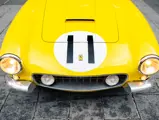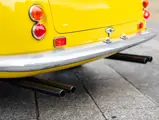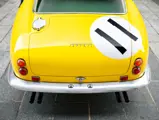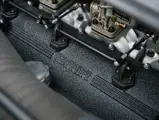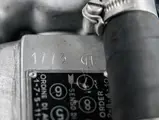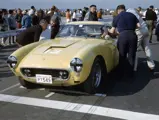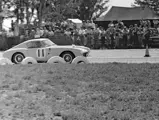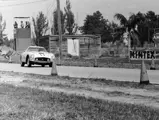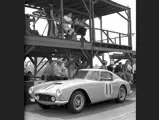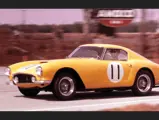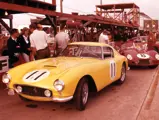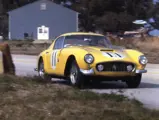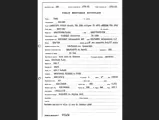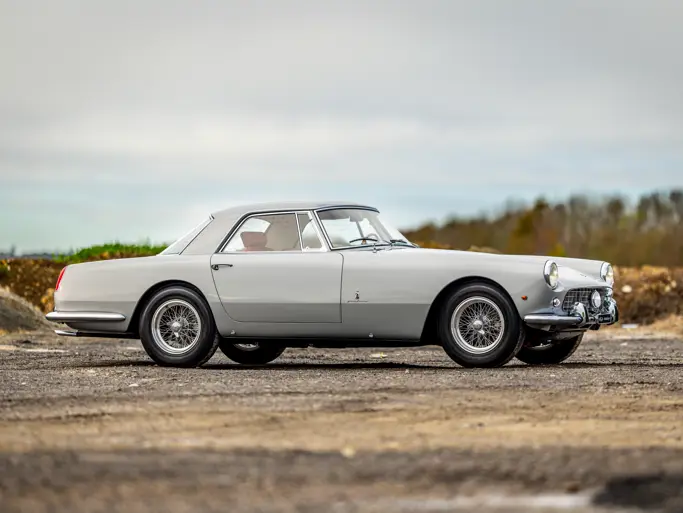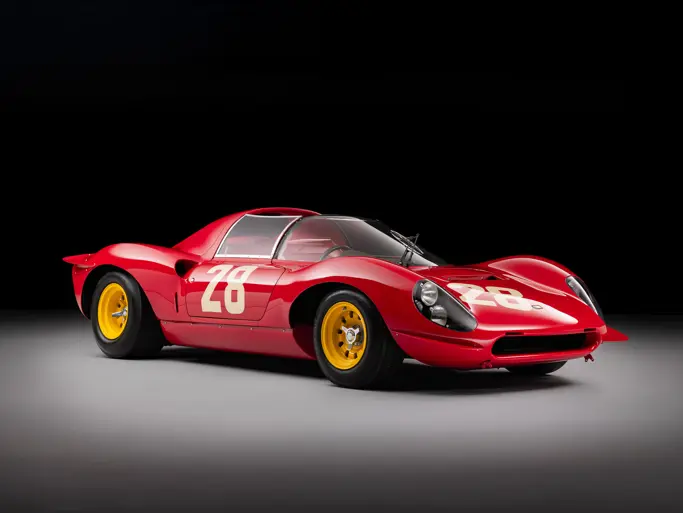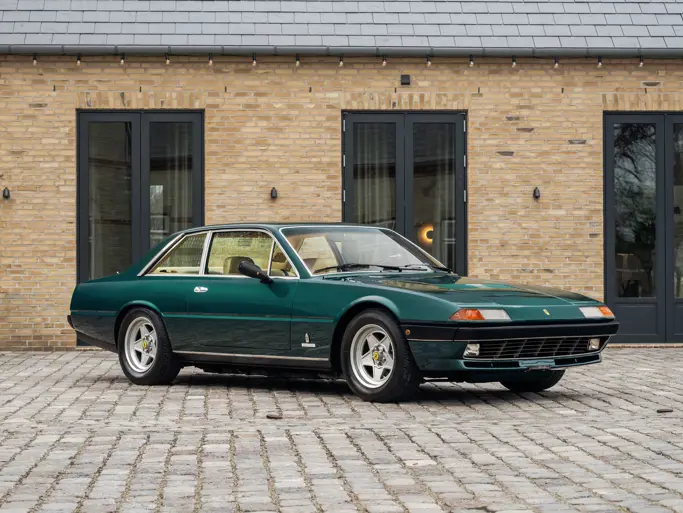
1960 Ferrari 250 GT SWB Berlinetta Competizione by Scaglietti
{{lr.item.text}}
€10,158,125 EUR | Sold
{{bidding.lot.reserveStatusFormatted}}
- Driven to 5th in class in the model’s race debut at the 1960 12 Hours of Sebring
- Highly successful period race history with 14 podium finishes across over 20 races
- Equipped from new with the more powerful Tipo 168 B engine, a specification that only a very limited number of the 1960 alloy SWB Berlinettas received
- Ferrari Classiche Red Book certified; retains its matching-numbers chassis, engine, and rear axle
- Subject of a recent full concours-level restoration by Wayne Obry’s Motion Products with final details done by Toni Auto in Maranello; full receipts total nearly $1 million
- Eligible for some of the finest motoring events around the world
- Cinquième de sa catégorie aux 12 Heures de Sebring 1960, toute première course du modèle
- Brillant palmarès d'époque avec 14 podiums obtenus en 20 courses
- Équipée du moteur Tipo 168 B plus puissant, une spécificité dont n'ont bénéficié qu'un tout petit nombre de berlinettes châssis court en aluminium de 1960
- Certifiée Ferrari Classiche ; châssis, moteur et pont arrière d'origine (numéros concordants)
- Restauration récente au niveau concours par les ateliers Motion Products de Wayne Obry, avec finalisation par Toni Auto à Maranello ; factures totalisant près d'un million de dollars
- Éligible à certains des évènements automobiles les plus prestigieux du monde entier
Veuillez noter que ce lot est entré dans l'UE sous couvert d'une autorisation d'importation temporaire, qui doit être annulée soit en exportant le lot en dehors de l'UE avec une lettre de débarquement approuvé accompagné des documents douaniers nécessaires, soit en payant la TVA et les droits d'importation applicables pour que le lot reste dans l'UE.
Ferrari’s 250 GT SWB was one of the few models in automotive history where form and function met perfectly, arguably only surpassed by its own direct successor, the 250 GTO. Few cars genuinely transcend design boundaries to become greater than a sum of their parts, to be considered an art form rather than categorised as transport—the 250 GT SWB is one of them.
The 250 GT SWB was the product of evolution, a quest for perfection and competition dominance. Its predecessor, the “Tour de France” variant of the 250 GT, had been wildly successful in GT racing but the SWB marked a step-change for Ferrari. Designed with a shorter chassis, the SWB debuted the proficient 168-type “outside-plug” version of Ferrari’s 3-litre V-12 engine and disc brakes were fitted on all four corners—for endurance racing, a powerful and reliable drivetrain was key to success.
Fulfilling its promise, the SWB Competizione variant proceeded to dominate GT racing across Europe and America achieving overall or class victories in nearly 250 races between 1960 and 1967. These included a number of epic wins, with notable class victories at the 24 Hours of Le Mans in 1960 and 1961, as well as overall victory at the 1961 and 1962 Tour de France, the latter of which was won by beating eight 250 GTOs in the process.
One of just 45 aluminium-bodied Competizione examples built in 1960, chassis 1773 GT was completed on 16 March 1960, constructed intentionally, as noted on its build sheet, for the 1960 edition of the 12 Hours of Sebring—significantly this race was the SWB’s competition debut. This Ferrari was delivered new in a high-level competition specification per Factory Build Sheets—of note are the Tipo 168B “hot rod” engine and roll hoop. Entered by Luigi Chinetti’s famous North American Racing Team, apparently with light factory support, this SWB was piloted by George Arents and Bill Kimberly, both wealthy heirs and well-known exponents of the US racing scene. Arents was a founding backer of NART, so it is no coincidence that he was the first owner of 1773 GT.
Entered into the Sports 3 Litre class due to its then non-homologated status, 1773 GT was vying for overall honours against the likes of Porsche RS 60s, Ferrari 250 TRs and two other SWBs. When the chequered flag dropped after 12 punishing hours of racing, this SWB crossed the line in an impressive 7th place overall, and 5th in class.
Chassis 1773 GT was later sold to multiple Le Mans class winner, Bob Grossman, who next brought the SWB out to the star-studded series of year-end races at Nassau. The Bahamas Speed Week was the bookend of the season with Works-entered cars and drivers from Europe and America convening in Nassau. Starting with the Tourist Trophy race, Grossman finished a fine 2nd overall behind Stirling Moss in the Rob Walker-entered SWB, before competing in the Governor’s Trophy and finishing 11th overall. The final race was the Nassau Trophy, where Grossman finished 11th overall again but this time taking an accomplished GT class win.
In early 1961, 1773 GT was sold to its third owner, Bob Hathaway, who raced this Ferrari regularly throughout 1961 and early 1962, picking up overall and class podiums at most events. For one weekend in May 1961, former and future owners Grossman and Walt Luftman borrowed this SWB for the SCCA National races at Bridgehampton with Grossman taking overall victory in Race 6. The Ferrari made its second appearance at Nassau for the 1961 edition of the Bahamas Speed Week. In the Tourist Trophy race, Hathaway finished 3rd overall behind Moss and Grossman, who were both driving younger SWB Competizione “SEFAC Hot Rods”. For the Governor’s Trophy, Hathaway finished 7th overall, following Grossman’s SWB across the line. Unfortunately, a holed radiator forced a retirement from the Nassau Trophy race.
After a highly successful ownership in which 1773 GT achieved a dozen podium class finishes in nearly 20 races, Hathaway sold the SWB back to Grossman, who immediately traded it to friend Walt Luftman. After Luftman, it had a further six owners until 1987, when it joined the Van der Velden family.
The car passed through the hands of three further owners, including the respected collections of Nigel Dawes and Tony Smith, before being purchased by Bruce McCaw in 1999. Kept by him for a little over two years, it then entered the care of Ervin Lyon, who showed this SWB at the 2003 Amelia Island Concours before it joined the stable of historic racer John Romano. In this collection it was regularly seen at Ferrari events including Shell Ferrari Maserati Historic Challenge races and the 2010 Cavallino Classic.
In 2014, this remarkable Ferrari became part of the celebrated Pinnacle Portfolio. Recognising the importance of this early SWB Competizione, it was sent to Wayne Obry’s Motion Products Inc. to be restored to concours-winning standard. The car was entirely rebuilt with the intention of restoring it to exact delivery specification, so it was repainted to the correct shade of Giallo with a new stunning Pelle Verde interior. While the body was in bare metal, its originality was confirmed, and the chassis was studied to prove the charmed life this Ferrari has led. In all, invoices totalled nearly $700,000.
In 2023, this historic Ferrari was submitted to Ferrari Classiche and was granted full Red Book certification. During the process, the factory confirmed that this remarkable SWB Competizione importantly retains its original matching-numbers chassis, engine, and rear axle, while the gearbox fitted is a correct aluminium ribbed-casing competition unit. The certification also noted the originality of the body.
The Ferrari 250 GT SWB Competizione cemented its place in sports car history as one of the most successful GT racers of all time with nearly 250 victories in over 700 period competition races. Ranked among the finest 250 GT SWB Competizione extant, 1773 GT boasts the rare combination of a high performance original build configuration, a remarkable level of originality and preservation, and significant competition history at some of the great endurance races of the period. Eligible for some of the finest motoring events around the world, from the lawns of Pebble Beach to the Dunlop Curves of Le Mans, this remarkable SWB Competizione is ready to take its place among any of the greatest collections.
La Ferrari 250 GT châssis court était un des rares modèles de l'histoire de l'automobile où la forme et la fonction étaient en parfaite symbiose, et elle n'a été surpassée dans ce domaine que par sa remplaçante directe, la 250 GTO. Rares sont les voitures qui transcendent les frontières du design au point de représenter plus que la sommes des pièces qui les constituent, et d'être considérées comme une forme d'art plutôt qu'un moyen de transport — la 250 GT châssis court en fait partie.
La 250 GT châssis court est le résultat d'une évolution, d'une quête pour la perfection et la domination en compétition. Sa devancière, la 250 GT "Tour de France", avait obtenu de très bons résultats en catégorie GT mais la 250 GT châssis court marquait un tournant pour Ferrari. Conçue sur un châssis plus court, elle était une des premières à bénéficier de l'excellent V12 de 3 litres type 168 "à bougies extérieures" et elle recevait des freins à disque sur les quatre roues — pour les courses d'endurance, un moteur puissant et fiable était la clé du succès.
Répondant aux espoirs, la version 250 GT Competizione n'a pas tardé à dominer les courses GT en Europe et aux États-Unis, remportant quelque 250 victoires de catégorie ou au classement général entre 1960 et 1967. Certains succès particulièrement notables en font partie, comme les victoires de catégorie aux 24 Heures du Mans 1960 et 1961, ainsi que les victoires au classement général du Tour de France Auto en 1961 et 1962, la deuxième fois devant huit 250 GTO.
Faisant partie des 45 exemplaires de 250 GT Competizione à carrosserie aluminium produits en 1960, cette voiture (châssis n°1773 GT) a été terminée le 16 mars 1960 et, comme le précise la fiche de fabrication, a été construite spécialement pour les 12 Heures de Sebring 1960 — ce qui correspondait d'ailleurs à la première compétition à laquelle participait le modèle. Cette Ferrari a été livrée neuve avec un haut niveau de spécifications course indiquées sur les fiches de fabrication de l'usine — avec en particulier le moteur Tipo 168B plus puissant et un arceau de sécurité. Engagée par la célèbre North American Racing Team de Luigi Chinetti, avec semble-t-il une légère assistance usine, cette voiture était pilotée par George Arents et Bill Kimberly, deux héritiers fortunés et participants connus aux épreuves américaines. Arents avait été partie prenante dans la création du NART et il n'est donc pas surprenant qu'il ait été le premier propriétaire de 1773 GT.
Inscrite en catégorie Sport 3 litres car le modèle n'était pas encore homologué, 1773 GT s'est battue pour la victoire contre des machines comme les Porsche RS 60, Ferrari 250 TR et deux autres 250 GT châssis court. Quand le drapeau à damiers a sonné la fin des 12 longues heures de l'épreuve, cette 250 GT Competizione a remporté une impressionnante septième place au classement général, et la cinquième de sa catégorie.
Cette voiture n°1773 GT a été ensuite vendue à Bob Grossman, multiple vainqueur de catégorie au Mans, qui l'a emmenée à Nassau pour la prestigieuse série de fin d'année : la Bahamas Speed Week clôturait la saison et attiraient des voitures d'usine et des pilotes professionnels venus d'Europe et d'Amérique. Engagé d'abord dans la course du Tourist Trophy, Grossman a terminé deuxième derrière Stirling Moss qui était au volant de la 250 GT châssis court aux couleurs de Rob Walker, puis il a disputé le Governor’s Trophy où il a obtenu la onzième place. La dernière course était le Nassau Trophy, où Grossman est arrivé onzième, mais cette fois avec une superbe victoire de catégorie.
Au début de 1961, 1773 GT a été vendue à son troisième propriétaire, Bob Hathaway, qui a fait régulièrement courir cette Ferrari tout au long de 1961 et au début de 1962, signant la plupart du temps des podiums de catégorie. A l'occasion d'un week-end de mai 1961, l'ancien et le futur propriétaire de cette voiture, Grossman et Walt Luftman, l'ont empruntée pour les séries SCCA National de Bridgehampton, où Grossman a remporté la victoire au classement général dans la sixième course. La Ferrari a fait une deuxième apparition à Nassau pour l'édition 1961 de la Bahamas Speed Week. Dans le Tourist Trophy, Hathaway est arrivé troisième au classement général derrière Moss et Grossman, tous deux au volant de 250 GT Competizione plus récentes et préparées par la SEFAC. Pour le Governor’s Trophy, Hathaway a fini septième au classement général, juste derrière la 250 GT de Grossman. Malheureusement, un trou dans le radiateur a provoqué son abandon pour le Nassau Trophy.
Après cette période de succès au cours de laquelle 1773 GT a remporté une douzaine de podiums de catégorie sur presque 20 courses, Hathaway a revendu la voiture à Grossman, qui l'a immédiatement cédée à son ami Walt Luftman. Après Luftman, elle a connu six autres propriétaires jusqu'en 1987, quand elle a rejoint la famille Van der Velden.
La voiture est encore passée entre les mains de trois autres propriétaires, dont les collectionneurs connus Nigel Dawes et Tony Smith, avant d'être achetée en 1999 par Bruce McCaw. Il l'a gardée un peu plus de deux ans et l'a cédée à Ervin Lyon, qui l'a exposée en 2003 au Concours d'Élégance d'Amelia Island avant qu'elle ne rejoigne la collection de John Romano, pilote en course historique. En sa possession, elle a régulièrement pris part aux évènements Ferrari comme les courses du Shell Ferrari Maserati Historic Challenge et le Cavallino Classic 2010.
En 2014, cette Ferrari remarquable a été intégrée à la célèbre collection "Pinnacle Portfolio". Reconnaissant l'importance de cette 250 GT châssis court Competizione des débuts, elle a été envoyée aux ateliers Motion Products de Wayne Obry, pour être restaurée au standard concours. La voiture a été entièrement remise en état avec l'intention de lui rendre sa configuration d'origine, si bien qu'elle a été repeinte dans la couleur "Giallo" correcte avec intérieur "Pelle Verde". Une fois la coque mise à nu, son bon état d'origine a pu être confirmé, et le châssis a pu être inspecté pour constater la vie bien remplie de cette Ferrari. En tout, les factures ont totalisé presque 700 000 $.
En 2023, cette Ferrari historique a été présentée à Ferrari Classiche et a obtenu le "Red Book" de certification. A cette occasion, l'usine a confirmé que cette remarquable 250 GT Competizione comportait encore son châssis, son moteur et son pont arrière d'origine, alors que la boîte de vitesse qui l'équipe est une boîte compétition correcte à carter en aluminium aileté. La certification a également souligné le caractère original de la carrosserie.
La Ferrari 250 GT châssis court Competizione s'est imposée dans l'histoire du sport automobile comme une des voitures de catégorie GT les plus performantes de tous les temps, avec à son actif 250 victoires dans plus de 700 épreuves. Considérée comme une des meilleures 250 GT châssis court Competizione encore en existence, 1773 GT présente la rare combinaison d'une configuration très sportive dès sa sortie d'usine, d'un niveau remarquable de préservation et d'originalité, et d'un palmarès significatif dans certaines des plus célèbres épreuves d'endurance de l'époque. Éligible à certains des évènements automobiles les plus prestigieux du monde, depuis les pelouses de Pebble Beach jusqu'au virage Dunlop du circuit du Mans, cette remarquable 250 GT Competizione est prête à prendre sa place au sein des plus grandes collections.






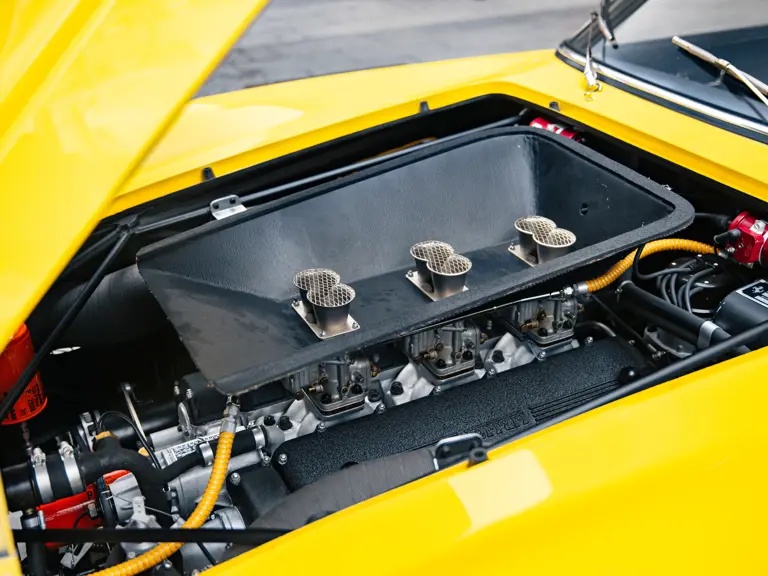
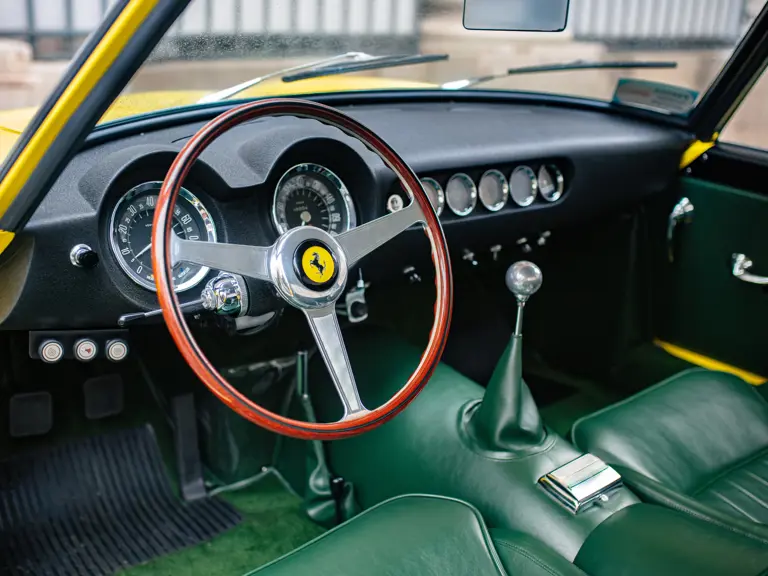

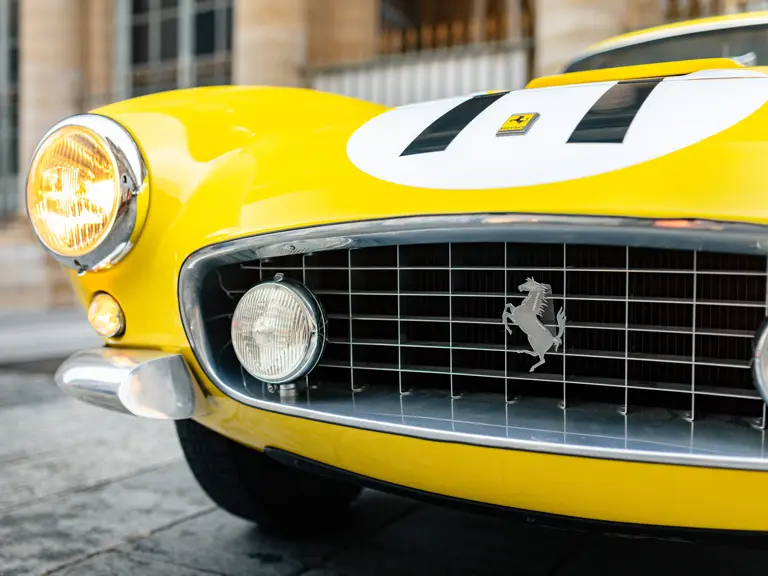

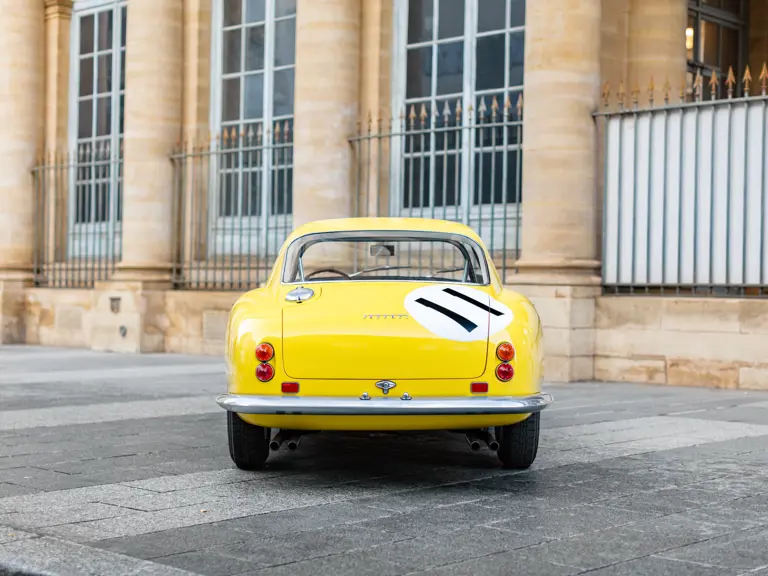

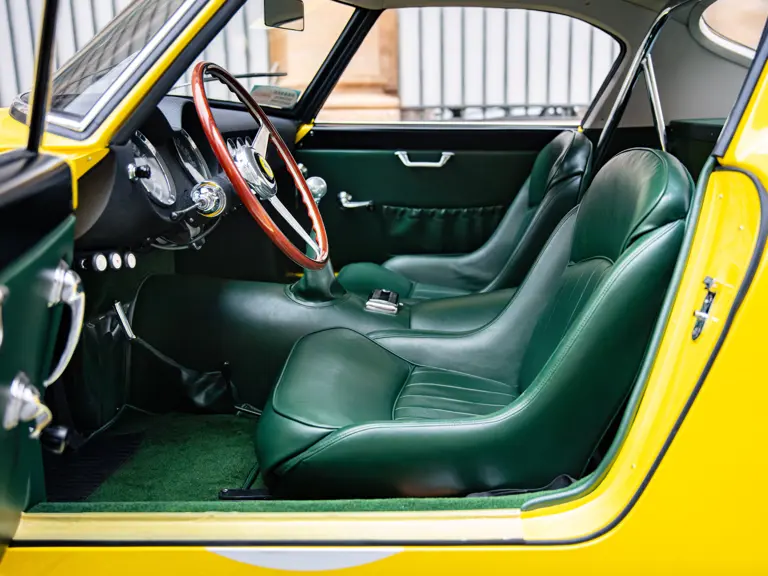


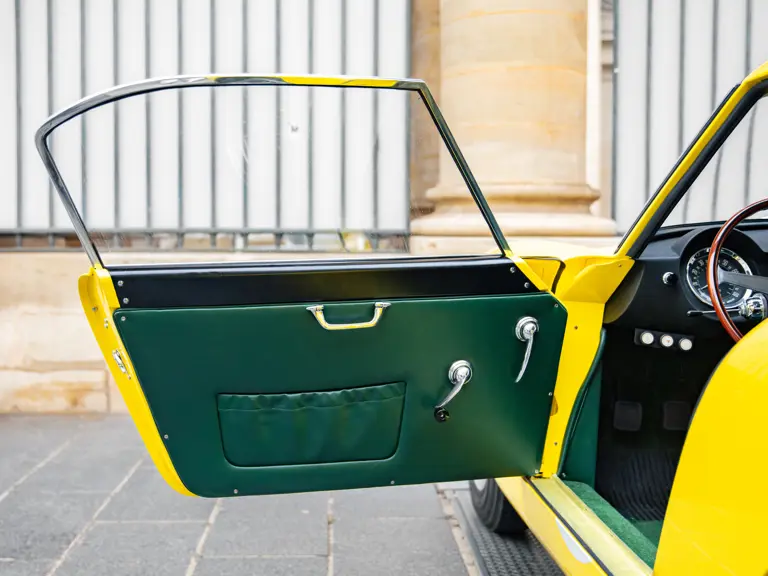


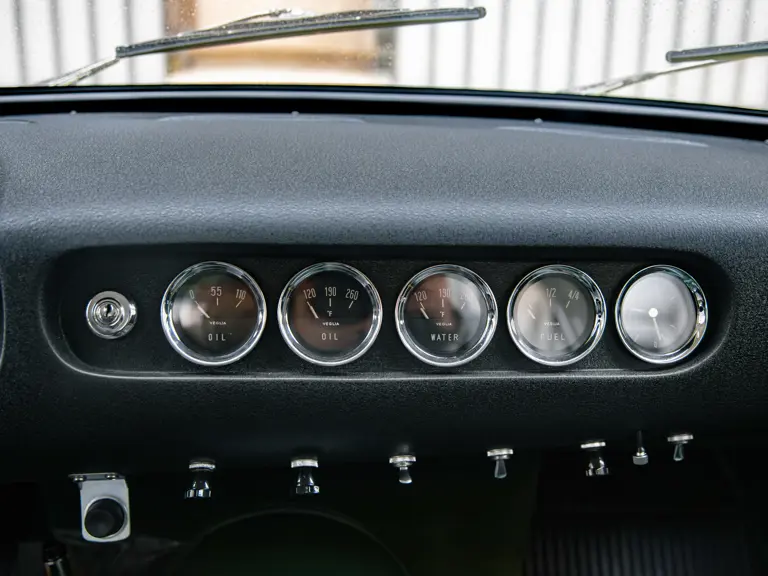
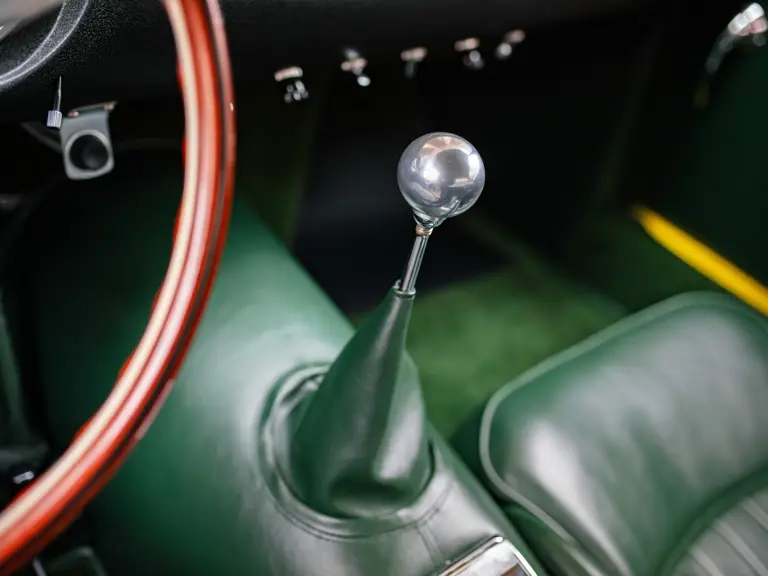
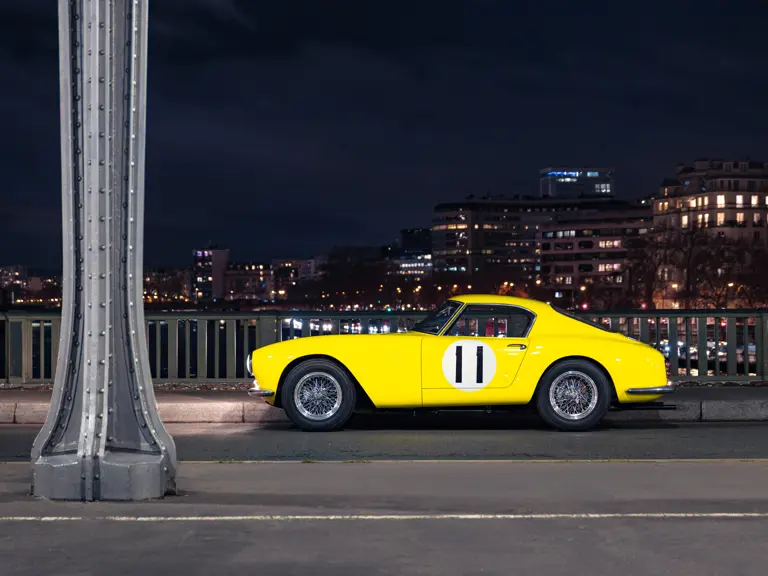
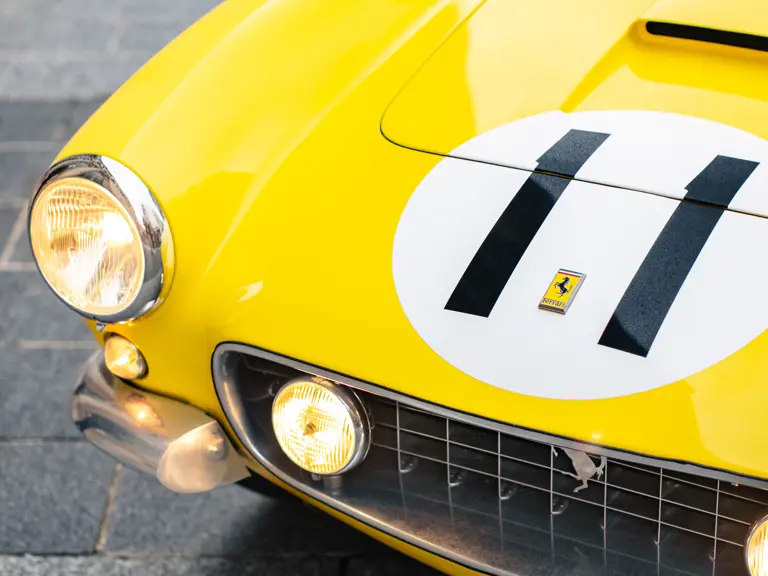



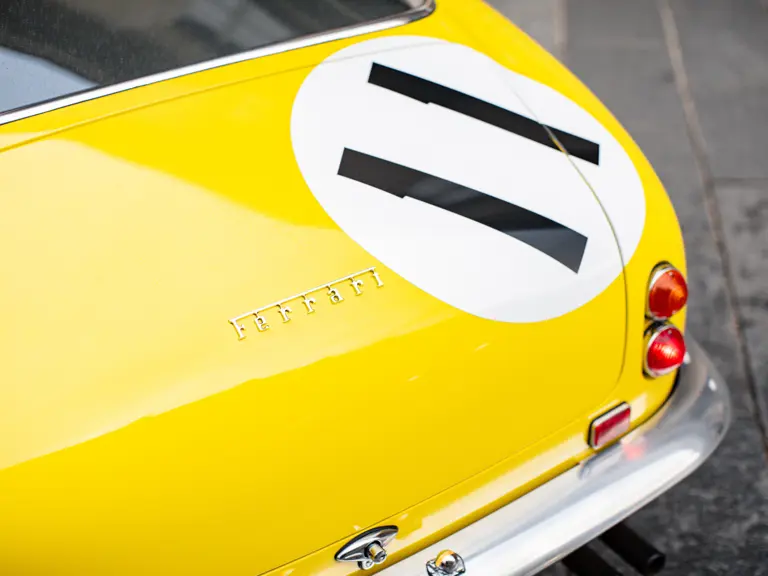
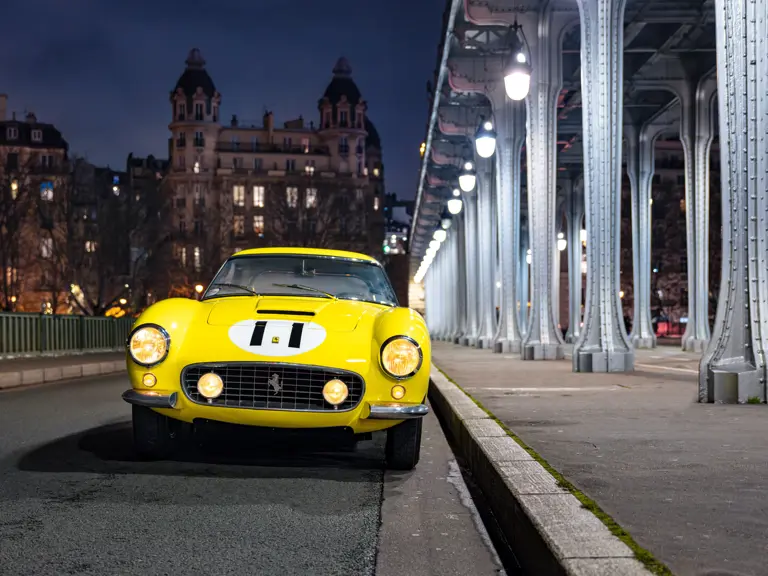
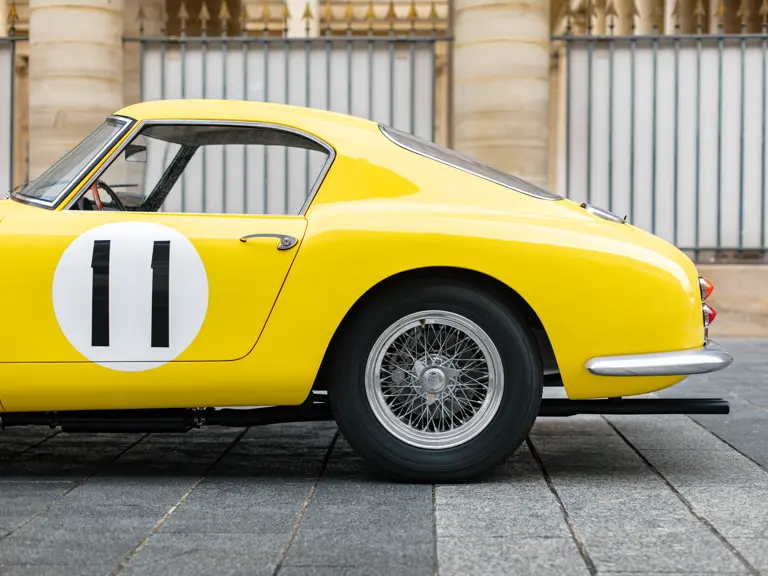


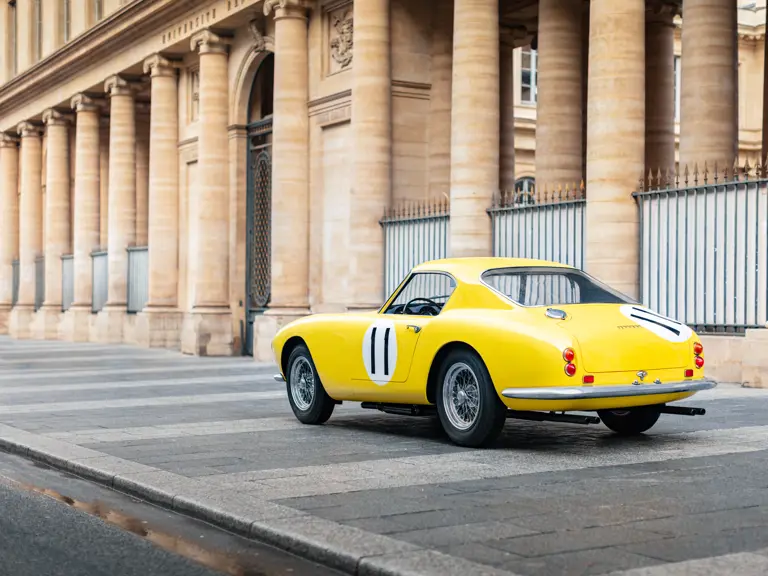




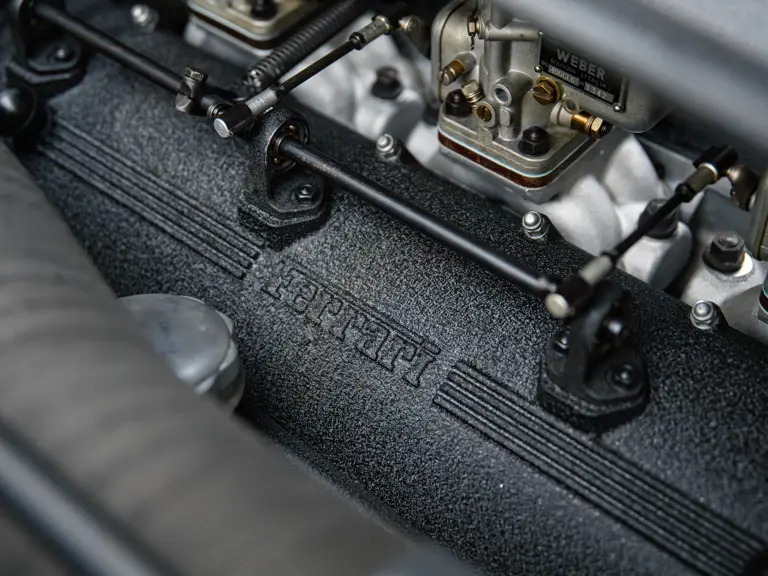
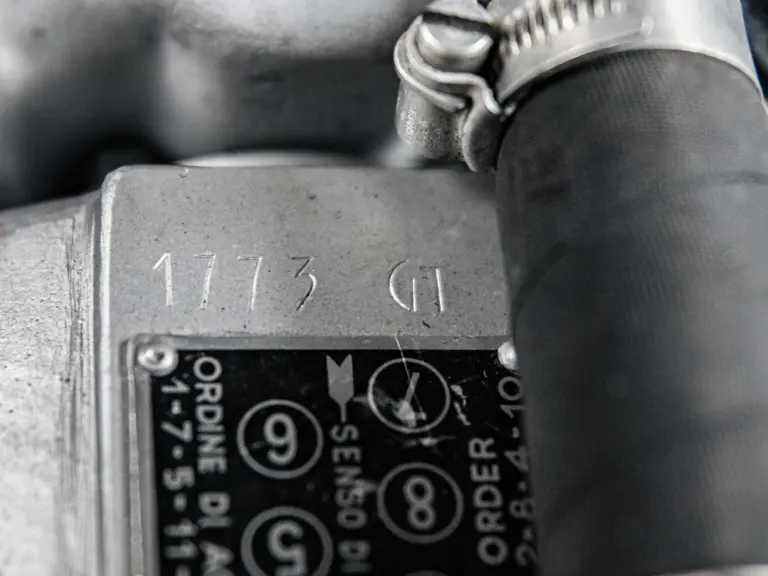
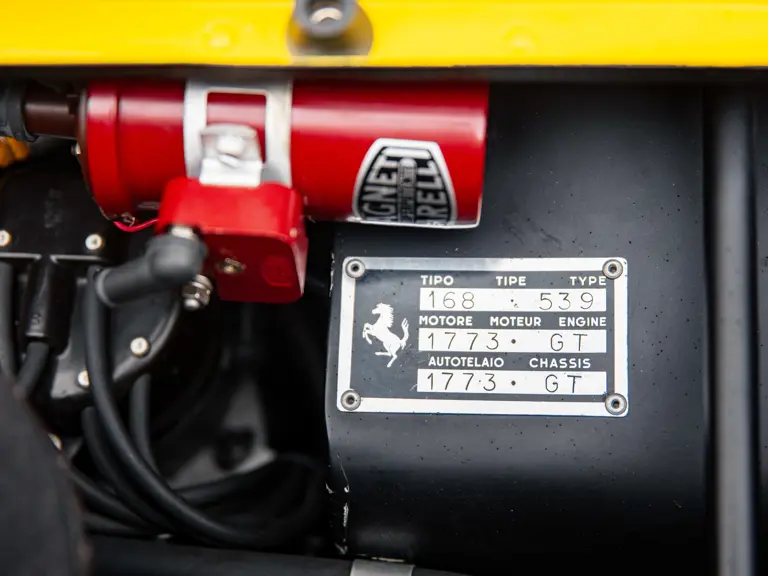
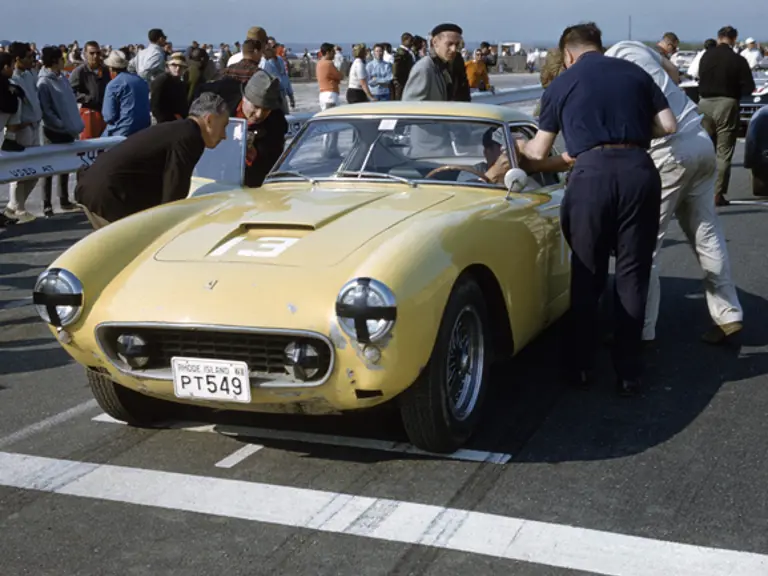


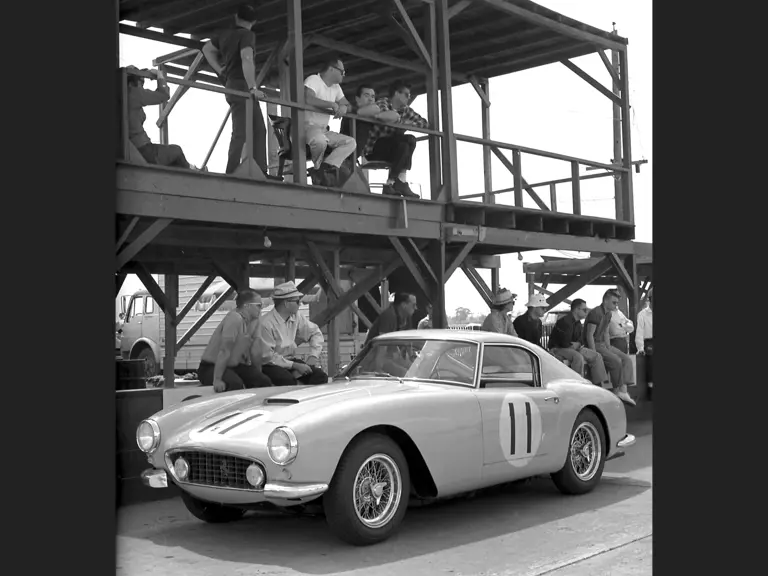
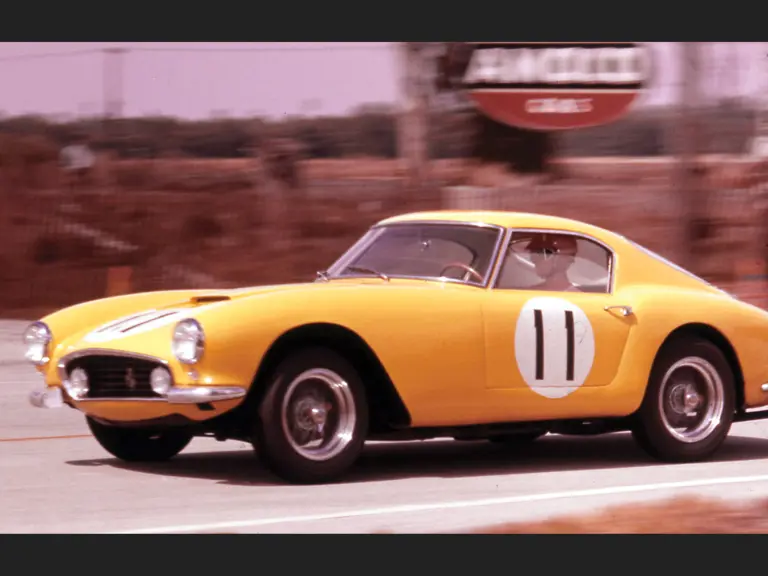
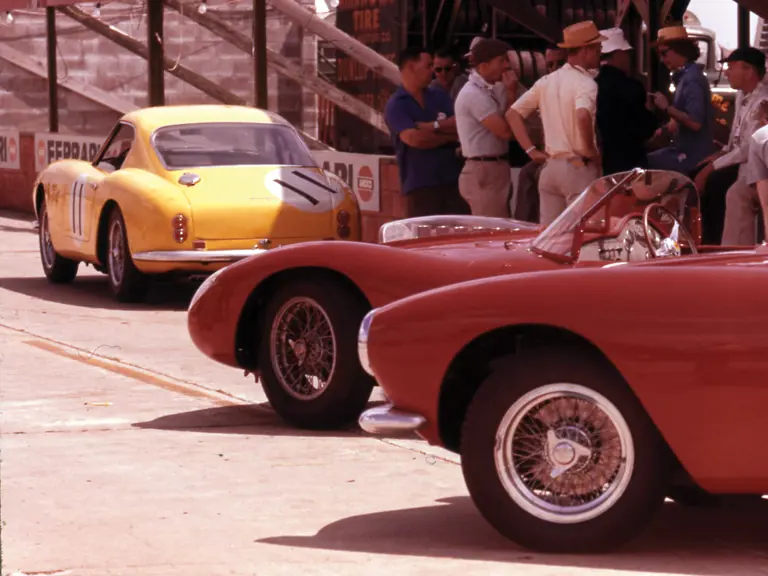
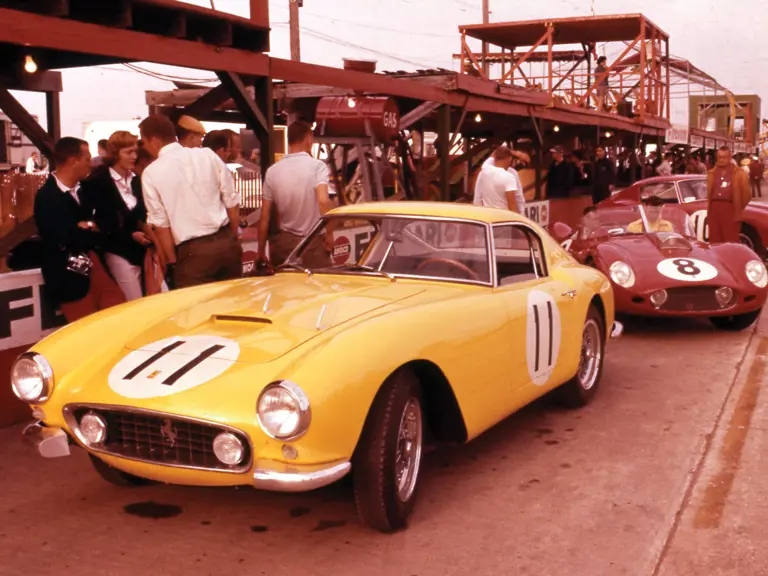
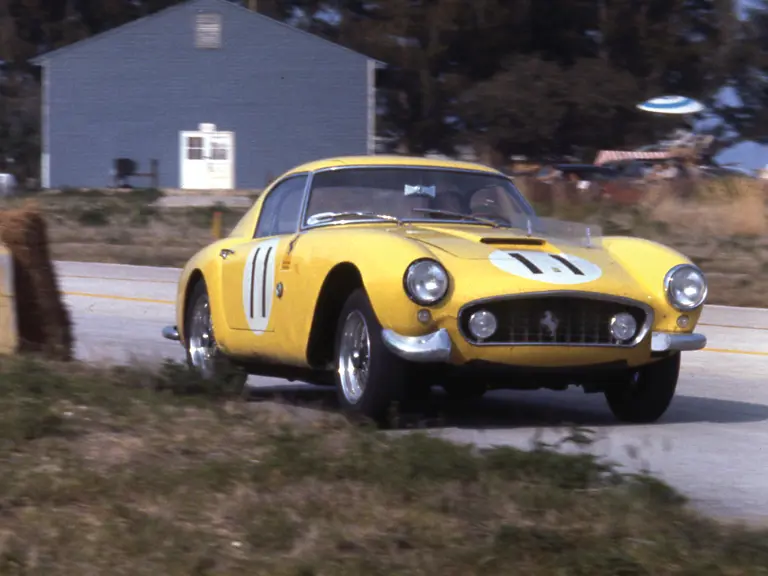
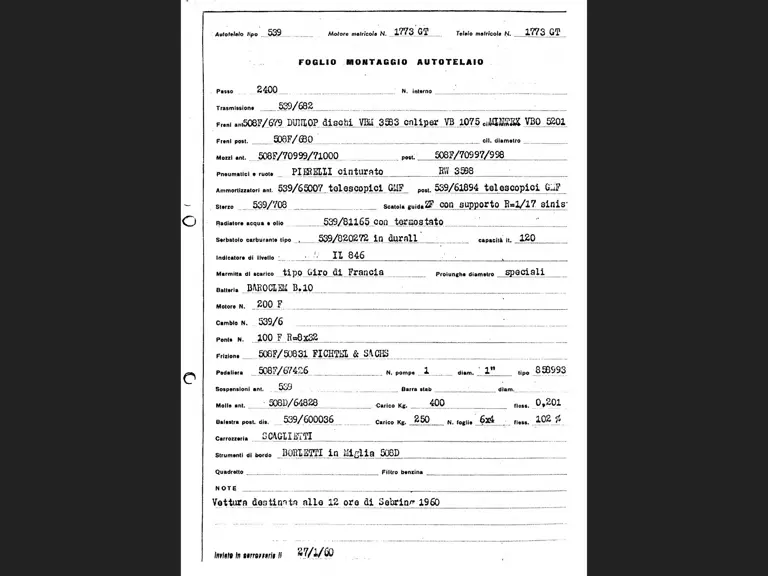
 | Paris, France
| Paris, France
